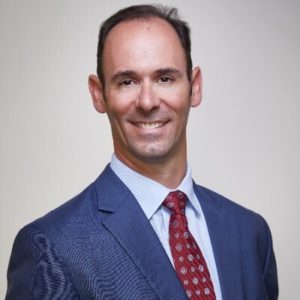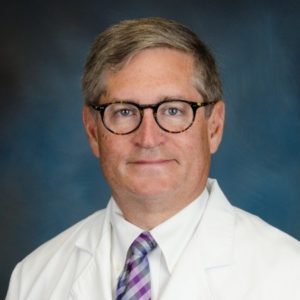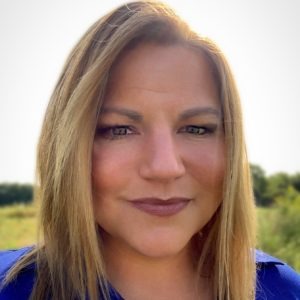Caregiver Voices: Caregivers Reflect on the Pandemic

Dr. Darren Swenson, MD, MSHQSM, CPE, CHCQM, Chief Executive Officer, US Post Acute Care, LLC
Over the past year, caregivers have been integral to not only ensuring that senior care facility residents receive the care and support they need, but also in helping to keep those residents safe. As we’ve navigated the pandemic, many caregivers have taken on new roles and faced new challenges. Two caregivers have shared their perspectives with us, so that we can learn both what they’ve experienced and ways that we can better support them moving forward:
- Alexander Magan, Assistant Director of Nursing at Spring Hills of Wayne, a part of the Spring Hills Senior Communities
- Dr. Darren Swenson, MD, MSHQSM, CPE, CHCQM, Chief Executive Officer of US Post Acute Care, LLC
Can you briefly describe your position and your place of employment? What did your typical workday look like before the pandemic?
Magan: Currently, I work as the Assistant Director of Nursing at Spring Hills of Wayne. While every day presents a different challenge, my typical workday revolves around our patients’ wellbeing as well as ensuring my nursing team is comfortable and working to the best of their ability.
Swenson: I am the founder and CEO of US Post Acute Care, a post-acute clinical practice group based in Tacoma, Washington, and I am also a practicing clinician working in the senior facilities we work with. Our clinical team is comprised of highly experienced physicians, nurse practitioners and physician assistants dedicated to providing excellence in patient care to skilled nursing facilities, long-term care facilities, and post-acute communities across the United States.
Prior to the pandemic, my workday was about 80% administrative focused, whether leading our company vision or developing new clinical programs to support facilities, and 20% clinical focused. On the clinical side, I am rounding clinically as physician in skilled nursing, long-term, and post-acute facilities. Additionally, as a practicing physician, I often serve as an acting Medical Director on site for these facilities to direct and ensure the quality care of post-acute patients.
During the pandemic, how did your typical workday change?
Magan: Like I’m sure it is for other healthcare providers to answer – this is a hard one. No one was ready for what we were about to endure. For me, one of the biggest concerns was ensuring our residents and employees were safe and understood how to best protect themselves by following guidelines that were provided to us – but that meant that every workday changed drastically. Every day was a new battle and as much as you attempted to plan or structure it, we found ourselves constantly adapting to the onslaught of obstacles thrown our way. Of course, together, we endured.
Can you describe some of the greatest challenges you faced while working as a caregiver during the pandemic?
Magan: The greatest challenge was seeing our patients fight for their lives, and because there was so much we didn’t understand at the time – this unknown virus per se – we tried our best to help and heal them but it seemed like the virus was winning, leaving us with this feeling of helplessness. As a leader and as a provider, you try your hardest to set the tone and remain strong for your patients and staff, but I found that it is ok to express empathy and sadness. Doing so really brought us together and made us feel connected, allowing us to push through and manage as best we could.
Swenson: As a clinician, we faced many challenges when the pandemic first broke here in Washington state in March 2020. Around that time, guidance was changing every day. We were getting guidance from the CDC, at the state-level, and from the post-acute facilities themselves, such as PPE protocols and processes. Guidance at every level was constantly changing because everyone was learning about the virus in real-time, which made for a very confusing and overwhelming clinician experience. The best way to describe it- we were all building the plane while we were flying it.
Additionally, being a caregiver for vulnerable populations became more challenging than ever when having to navigate a pandemic in which there is so much unknown about the novel virus. In the early days of the pandemic, we here in Washington had the second provider facility test positive for COVID-19 in the U.S. We were caring for some of the earliest infected patients in the country while learning about the virus in real-time with the rest of the world.
We were learning what vital signs to look for and what clinical symptoms were associated with Covid in real-time at the bedside. We were learning new information constantly, and while trying to educate ourselves we had to educate our patients and their families. Dealing with the stress and worry of the unknown of Covid was beyond challenging as clinicians.
At the same time, as a CEO, I had to balance the stresses of a clinician and giving support as a leader. Everyone was looking to me for answers – how to support facilities and patients, how to answer questions from families, how to remind people that so much of what they were hearing on the news wasn’t scientific- or evidence-based medicine. I had to have answers and I had to give reassurance during a time of so much unknown.
Did your work life affect your home life during the pandemic, and if so, how?
Magan: My life was not the same during the pandemic. I couldn’t be near my family or loved ones due to my profession and not wanting to transmit this virus to my loved ones. There was a big period of fear – not knowing if I would be able to hug or kiss my family again.
Swenson: The pandemic was extremely disruptive in all aspects of life, including at home. Once we moved in-office work to remote, I had to juggle having conference calls and meetings with our own clinicians and our facility partners about work and the pandemic, while also supporting teenage children learning from home.
Our business is purely in the skilled nursing, post-acute and long-term care space, and with Washington being the first state to show positive traces of the virus, it was difficult to educate myself and our physicians at the same time, and it was difficult for my family to watch me struggle along the way.
How did you cope with the stress and other emotions that the pandemic caused?
Magan: Something that I found comfort in and helped me a lot during this time was prayer and listening to music – it was like therapy and was a difference maker for me.
Swenson: We overcommunicated amongst our clinician care teams. We started weekly clinician calls to share the challenges we each were having in the field and in the post-acute facilities. Like all caregivers during the pandemic, we faced experiences daily that scared us, upset us, made us uncomfortable – and our calls became a sounding board for those experiences. We came closer together, forming a mental and emotional support group while at the same time learning from each other’s experiences as well.
We also found an outlet in physical exercise and the outdoors. We encouraged each other and our providers to get outside and decompress from work because every day was so taxing. We knew we needed to recharge when we could because working on the frontlines of the pandemic was excruciatingly exhausting, but our patients needed us to be on our A game come Monday morning – so we made sure we were.
Did your employer implement any changes or practices that you felt were valuable in supporting you? If so, what were they?
Magan: I truly love my team! I have an amazing Administrator and Director of Nursing because they did anything and everything to keep us safe. I have never seen a team come together the way we did in such a moment of great fear. Our leaders implemented more precautions for employees and residents, making us feel as safer and putting us a bit more at ease.
Swenson: For our clinical care team at US Post Acute Care, we implemented new ways to work smarter. Notably, we leaned on new partnerships to take the administrative burden off of our caregivers and clinicians because the demand for care was so high. We started working with the Cosan Group to offload data collection and analysis.
The Cosan Group began doing all of our data collection for our Chronic Care Management (CCM) patients that was aligned with our SmartPACTM clinical program and helped take burden off our providers. Because the patient data, and insights generated from that data, was always readily available for them, caretakers could more efficiently evaluate patients doing rounds. The time savings allowed us to spend more time with patients and delivering thoughtful treatment plans, resulting in better care for patients with CCM.
What types of challenges are you still facing in your daily work?
Magan: It’s been one year since this started and I truly feel safe in my workplace. That said, the pandemic continues including the introduction of different variants. So, that fear of the unknown, can place added stress on my staff and me, but at least now we have more of an understanding of the virus and how we should react.
Swenson: The long-term care space is a highly regulated environment, appropriately so, given the vulnerable population we care for. With this environment comes requirements for mandated surveys, and our experience with the survey process is still tough. While we understand the value and purpose, the surveys have felt more punitive than collaborative. When every moment counts in providing care to our patients, spending time on paperwork or responding to citations has become frustrating part of our day-to-day work.
What changes could the government, your employer, or society as a whole make to better support caregivers both during and after the pandemic?
Magan: I think everyone did the best they could, given the circumstances at the time this pandemic started. Still, I would like to see more mental health support for healthcare providers. So many of us have dealt with loss of a loved one while caring for patients. We can’t discount the cascading effects that healthcare providers face when they are asked to provide care in unprecedented conditions, only to go home and face unprecedented conditions there as well. I believe that leaves them with some form of PTSD. We can only wish that we have overcome the worst of this pandemic, but hope is not a plan.
Swenson: Societally, from my own experience, I thought everyone did the best they could in being as supportive and understanding with caregivers as possible. The families of our patients in these facilities especially, were patient and understanding during the difficult time when they couldn’t enter the facilities to visit their loved ones. When we’d do video chats or phone calls between family and patient, so many took the time to thank us caregivers. For nurses, therapists, and our providers, that simple thank you was so powerful and helped keep us going. That empathy and kindness is something I hope long extends past the pandemic.
On the government state-level, I think surveys and surveyors need to become more collaborative. We need to take the approach of teaching and supporting, versus a focus on punishment and fines. It takes away from caregiving and from patient care.
Is there anything else that you would like to share about your experience?
Magan: I’ve learned that I chose the right career, and I am proud to be a nurse. I’ve also learned that one of the keys to being ready for any obstacle in your path is to have a strong support system like the team I have here at Spring Hills of Wayne.
Swenson: Many of us, including myself, would say the Covid-19 pandemic is something we hope to never experience again. However, it reminded us about what dignity means in caring for this vulnerable population and what it means to communicate meaningfully and thoughtfully in healthcare. When speaking to patients and their families about their wishes or collaborating more frequently amongst providers- patients, families, caregivers, and providers were all communicating better.
I believe we will all be better communicators after this, and that this experience will serve as a reminder about why we became clinicians in the first place- to care for those in need the best we can.

Paige Cerulli is a contributing writer to i Advance Senior Care.
Related Articles
Topics: Clinical , Featured Articles , Resident Care










